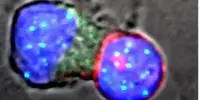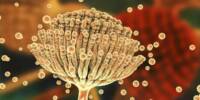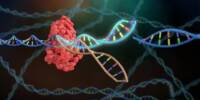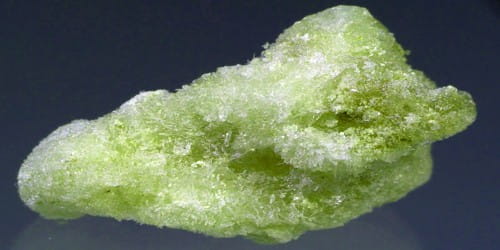Researchers wanted to know how diatoms, which are small photosynthetic algae that account for an estimated 20% of global carbon sequestration and oxygen generation, may bloom in an ice-covered Lake Erie, as well as how ice loss across the Great Lakes affects them.
Spring weather creates ideal circumstances for flowers and plant life to grow throughout the land. The perfect combination of temperature, moisture, and light helps keep the green world alive.
Underwater plant life typically responds to comparable environmental stimuli, but a strange discovery in Lake Erie around 2012 prompted microbiologists to investigate an unusual display of winter abundance. Diatom blooms, which are microscopic photosynthetic algae, were alive and thriving beneath (and within) the lake’s ice.
“Some of the main winter-spring diatom bloom formers, like Aulacoseira islandica, have a symbiotic relationship with heterotrophic bacteria capable of forming tiny ice crystals, which over time causes the diatom filaments to become buoyant – just as ice cubes float in your favorite beverage,” said Brittany Zepernick, a post-doctoral researcher and SEC Emerging Scholar in UT’s Department of Microbiology.
Some of the main winter-spring diatom bloom formers, like Aulacoseira islandica, have a symbiotic relationship with heterotrophic bacteria capable of forming tiny ice crystals, which over time causes the diatom filaments to become buoyant – just as ice cubes float in your favorite beverage.
Brittany Zepernick
These ‘diatom ice cubes’ float to and embed in Lake Erie’s ice cover, allowing them to collect the light required for photosynthesis throughout the winter months. It was good news for diatoms, which are an important component of the cumulative ecosystem in lakes and oceans around the world.
This unusual adaption is jeopardized, however, as rising global temperatures have resulted in widespread ice loss across the Great Lakes, leaving Lake Erie almost ice-free in several recent winters and diatoms trapped in murky, light-deprived waters. In these new “climatically uncharted waters,” the adaptations that had previously benefited these winter diatoms abruptly stopped working.
So, what’s a diatom to do? Zepernick and colleagues turned to the shores of Lake Erie to investigate the evolving situation. With the help of the US and Canadian Coast Guard, they sampled the ice-covered (in 2019) and ice-free (in 2020) winter waters of Lake Erie to learn how diatoms were responding to changing environmental conditions. They recently published their work in the ISME Journal — Multidisciplinary Journal of Microbial Ecology.
Two main diatom genera dominate the winter blooms: Aulacoseira islandica and Stephanodiscus spp.
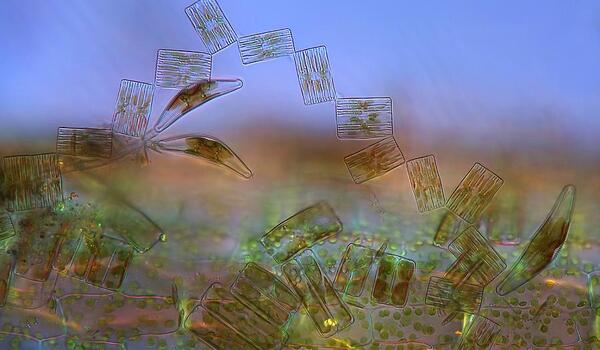
“The abundance of Stephanodiscus spp. was approximately 70 percent lower in the ice-free water column of 2020 compared to the ice-covered water column of 2019,” he stated. “Likewise, the abundance of Aulacoseira islandica was around 50 percent lower in the ice-free water column compared to the ice-covered water column.”
With ice cover across the Great Lakes at a historic low — from approximately 80% in 2018 and 2019 to only 8% in 2023 — researchers expect this trend to continue in future winters.
The next stage is to investigate how this affects Lake Erie, which, along with the other Laurentian Great Lakes of the United States and Canada, accounts for nearly 20% of the world’s fresh water.
“Despite the critical importance of this system, we didn’t know diatom blooms even formed in the winter-spring months until around 2012,” said Zepernick. “Many researchers have referred to the winter water column as a ‘New Frontier’ or a ‘black box.’ What we do know is that diatoms are critically important to regional lake ecosystems and global climate.”
Diatoms account for an estimated 20% of worldwide carbon sequestration and oxygen production, play an important part in global biogeochemical cycles, and are an essential component of the aquatic ecosystem in freshwater systems.
“Hence, the large-scale changes already underway to the winter-spring diatom communities in Lake Erie and other lakes across the globe will result in large-scale biological and biogeochemical change,” he said.
The diatoms’ ability to adapt could be the key to the light at the end of the ice tunnel. According to Zepernick’s recent research, they might create clusters of sticky proteins known as fascicles and “raft” to the surface of the muddy waters via “underwater waves” caused by wind, convection, and underwater currents.
Another adaptation Zepernick suggested was that diatoms could expand their use of proton-pumping rhodopins (PPRs), which are light harvesting, retinal-containing proteins that could serve as an alternative to traditional photosynthesis. She is currently working to isolate freshwater diatoms from Lake Erie samples using PPRs in order to develop a model freshwater diatom-PPR system for future research. Her discoveries may provide clues to the diatoms’ next move in a fast-changing climate.
“PPRs are a hot topic within marine literature, yet we know very little about how these mechanisms apply to freshwater systems and taxa,” she went on to say. “I am interested in elucidating the benefits PPRs may confer to both freshwater and marine diatoms across a variety of emerging — and future — climatic stressors.”


